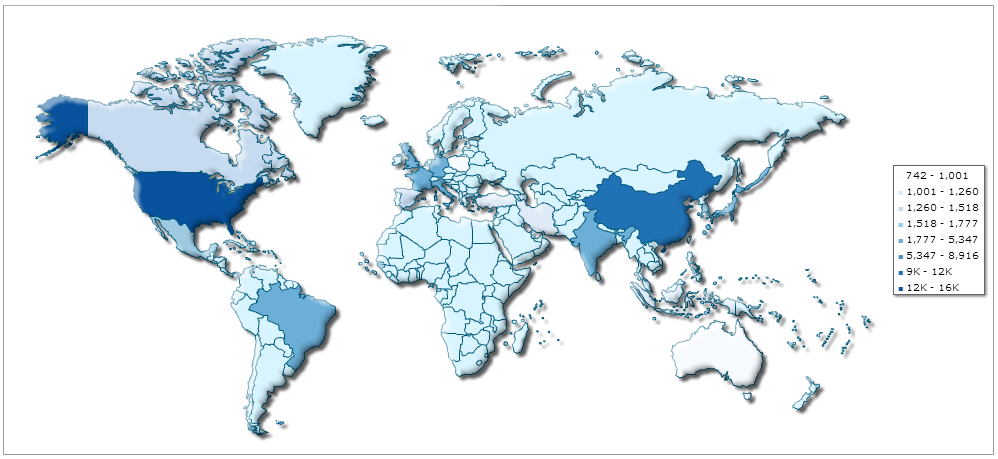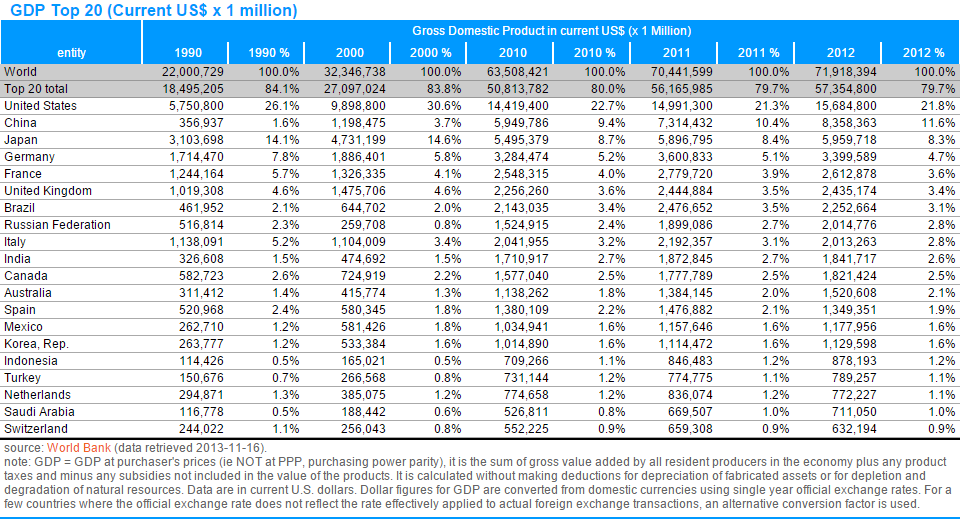- February 18, 2015
- Posted by: Wevio
- Category: Market Research & Analysis, Wevio Blog

This entry gives the gross domestic product (GDP) or value of all final goods and services produced within a nation in a given year. A nation’s GDP at purchasing power parity (PPP) exchange rates is the sum value of all goods and services produced in the country valued at prices prevailing in the United States. This is the measure most economists prefer when looking at per-capita welfare and when comparing living conditions or use of resources across countries. The measure is difficult to compute, as a US dollar value has to be assigned to all goods and services in the country regardless of whether these goods and services have a direct equivalent in the United States (for example, the value of an ox-cart or non-US military equipment); as a result, PPP estimates for some countries are based on a small and sometimes different set of goods and services. In addition, many countries do not formally participate in the World Bank’s PPP project that calculates these measures, so the resulting GDP estimates for these countries may lack precision. For many developing countries, PPP-based GDP measures are multiples of the official exchange rate (OER) measure. The difference between the OER- and PPP-denominated GDP values for most of the weathly industrialized countries are generally much smaller. The chart below displays the Gross Domestic Product (GDP) of several different countries. (GDP) is also defined as the value of all final goods and services produced within a nation in a given year. (GDP) at Purchasing Power Parity (PPP) exchange rate is the sum value of all goods and services produced in the country. The most common measure is the US dollar. Economists prefer to use this measurement when looking at per-capita welfare and comparing living conditions or use of resources across countries. Using the US dollar as a measure is difficult. This measure must be applied to all goods and services in the country even if they do not have a direct equivalent in the United States (for example the value of an ox-cart). As a result (PPP) estimates for countries that have a different set of goods and services can become skewed. In addition, many countries do not formally participate in the Word Bank’s (PPP) project that calculates this data. The resulting (GDP) estimates for these countries can be inaccurate. Most developing countries (PPP) based (GDP) is based on multiples of their Official Exchange Rate (OER). Generally wealthy industrialized countries have a much smaller difference between the (OER) and (PPP) denominated (GDP) values. List if Top 20 Countries and GDP statistics from 1990 – 2012 
 Here are list of global Statistics found recently:
Here are list of global Statistics found recently:
- The world economy is projected to grow at an average of around 3% per annum from 2014-50
- China Is Now the World’s Largest Economy Based on Purchasing Power Parity
- India overtakes Japan to become third-largest economy in purchasing power parity
- China, India To Lead World By 2050
- The UK is predicted to drop to 11th place in the rankings of the world’s largest economies by 2050
- India’s GDP rose by 7.5% in 2014, slightly above China’s economy
